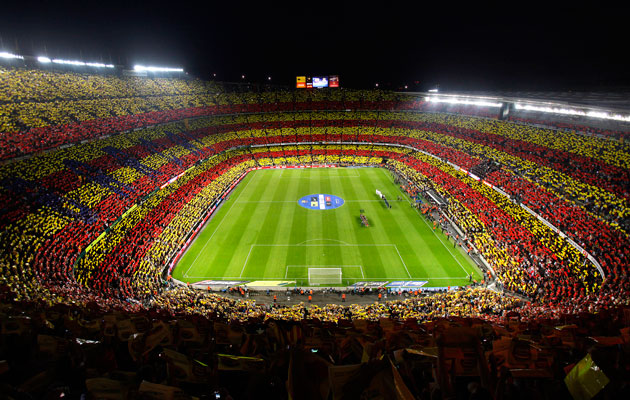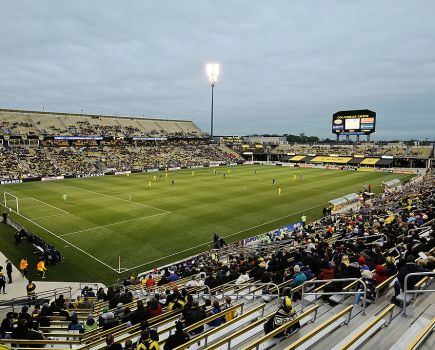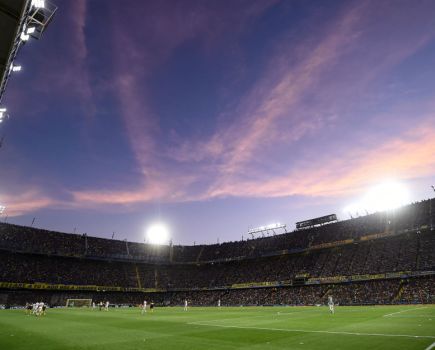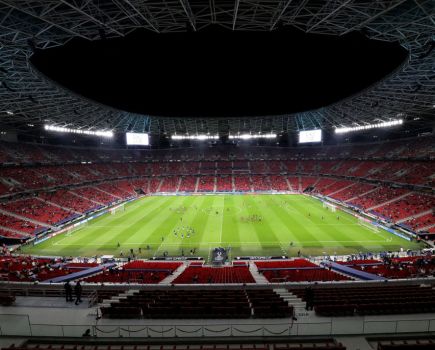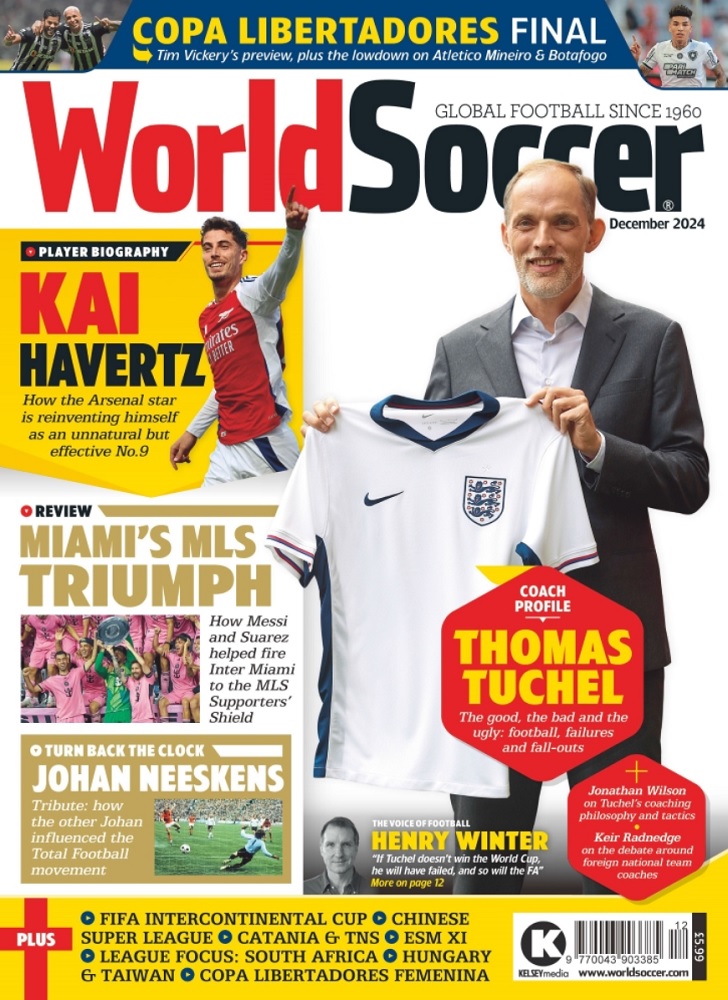Barcelona is one of 125 soccer cities featured in Libero, the digital travel guide for football fans. Regularly refreshed with new destinations and the travelogue Soccer Sagas, Libero is a one-click treasure trove of football trip tips, tales and trivia. See www.liberoguide.com.
Nou Camp
Barcelona v Real Madrid, La Liga, Saturday December 3
Masters of Europe and masters of Spain, FC Barcelona are masters of their own destiny. As their motto says, ‘More Than a Club’. With more members (100,000 plus) than any other, and more political clout than most, ‘Barca’ voted Josep Maria Bartomeu back in as club president in July 2015. The Barcelona-born entrepreneur reiterated €600 million plans for an expanded Nou Camp stadium, with a roof and overall capacity of 105,000, to be built in stages between 2017 and 2021.
Bartomeu’s first full season as president, 2014-15, saw FCB play as imperiously as at any time in their history. The South American front trio of Lionel Messi, Neymar and Luis Suarez was simply unbeatable as Barca gained a seventh league title in ten years, a Copa del Rey and a fifth Champions League/European Cup.
More than just winning the treble, the class of 2014-15 eclipsed the side that Pep Guardiola built. It wasn’t just the 14 trophies in four years under Guardiola – it was how they were won. Immaculate passing football (tiki-taka) was executed by the world’s best – Messi, Xavi, Iniesta – raised at the club’s academy of La Masia.
For 2015-16, playing in hooped shirts, nothing but another treble is expected of Luis Enrique’s men. Steamrollering over Real Madrid at the Bernabeu 4-0 in November, FCB look simply unstoppable. Entertainingly unstoppable. No wonder every other weekend, the world’s most attractive football team draws hundreds of UK visitors to the Nou Camp.

And, for the visit of Real Madrid for El Clasico this Saturday, as well as the 99,000-plus inside the ground, there will be tens of millions around the globe with their eyes on the Nou Camp.
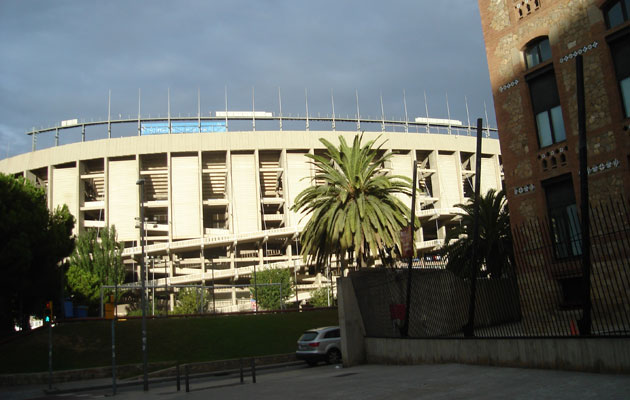
A vast three-tiered bowl with a thin, vertiginous fourth fringe by each scoreboard for away supporters, the ‘Camp Nou’ was inaugurated on 24 September 1957 during the post-war boom in Spanish football. With Kubala and other stars regularly attracting 60,000 fans to the cramped Les Corts, the management needed a modern arena. The first stone was laid in 1954 – in front of 60,000 fans. Three years later, with Handel’s ‘Messiah’ blasting out, one of the world’s finest football temples was unveiled.
Today, as the Blaugrana stride out, the Barça hymn rings out around the ground (‘Bar-ça! Bar-ça! Barrrr-çççça!) and Catalan flags of blood red and yellow are flown with abandon at either end of the ground. The notorious Boixos Nois outsing the Almogavers behind the other goal, the Nou Camp fills with fan clubs (penyas) from every corner of the world.
Nevertheless, at the time Franco-backed Real Madrid were still the dominant force. Barca fans had to suffer seeing their team go down 3-1 to Real in the European Cup semi-final of 1960. A few months later, Barca exacted revenge in front of 120,000 fans, breaking Real’s five-year monopoly on Europe’s premier trophy with a decisive 2-1 second-leg victory in an early round.
Barca-Real clashes have dominated the Spanish season ever since. The Nou Camp became a refuge for Catalans looking to express pride in their region suffering under the Franco regime. Ironically, Barca’s greatest triumph over their bitter rivals, the Cruyff-inspired 5-0 win of 1974, took place at Real’s Bernabeu.
In order to prepare for the 1982 World Cup, stadium capacity was increased to 115,000 with the addition of a third tier. New VIP and media areas were also put in, to complement the electronic scoreboards installed during the 1970s. Having hosted the European Cup-Winners’ Cup final a month earlier, a 2-1 win for FC Barcelona over Standard Liege, the Nou Camp then staged the opening game of the 1982 World Cup, a shock win for Belgium over Maradona’s Argentina. Ten years later, the Nou Camp played host to the 1992 Olympic football tournament, a late goal from Kiko winning Spain gold over Poland.

In 1998, standing areas were converted to seating, reducing the capacity to just under 100,000. Many of those packed in for the Manchester United-Bayern Munich Champions League final of 1999 had already left the ground before United’s Teddy Sheringham and Ole Gunnar Solskjaer famously reversed the scoreline in overtime.
Now luxuriating in the trophy-laden Messi era, the Nou Camp attracts a record number of visitors to its museum and for its stadium tours. It is currently the largest of UEFA’s official four-star stadia.
As announced in 2014, in the pipeline is a blueprint to raise capacity to 105,050, with a revamped and steeper first tier, the completion of the third tier and a large roof.
The renovation work is planned to start in May 2017 and end in February 2021. Construction will continue throughout three and a half football seasons, without interrupting Barça’s home-match commitments.
On the ground

The Nou Camp is north-east of Sants train station, surrounded by three metro stations: Collblanc (blue L5); Les Corts, and Maria Cristina (both green L3). Collblanc gives access to the bars of Riera Blanca and is an easy, direct hop from Sants. Bus No.56 runs closer, right by the bars of Riera Blanca, and links with Sants and focal squares of Espanya and Catalunya.
Tickets go on sale ten days before each match from the Oficina de Taquillatge at Accès 14 (Mon-Thur 9am-1.30pm, 3.30-6pm; Fri 9am-2.30pm; Sat on match weekends 9am-1.30pm; match days from 11am). Locals also hang around Accès 14 to offload any spares. Tickets are also available on the club website.
Depending on the price category of the opposition, a seat in the best spot (1a/2a grada) in the main stand (tribuna) over the halfway line will cost €140-€180. Higher up (3a grada) is a few euros cheaper. Facing this, the lateral is similarly graded into tier prices (€100-€150). Behind the goals, the three tiers break down into price categories from €70-€90. The cheapest places are gol no numerat, general access, at €59.
Through Accès 7, the FC Botiga Megastore (Mon-Sat 10am-8pm; Sun 10.30am-2.30pm; longer hours on match days) is a huge, two-tiered affair offering ‘Barça Campió’ Penedès wine in three colours, crash helmets, frying pans, golf clubs and dog bowls, along with the usual souvenirs. You’ll find other shops at Sants station, at the Maremàgnum on Port Vell and at Gran Via de les Corts Catalanes 418 in Eixample.
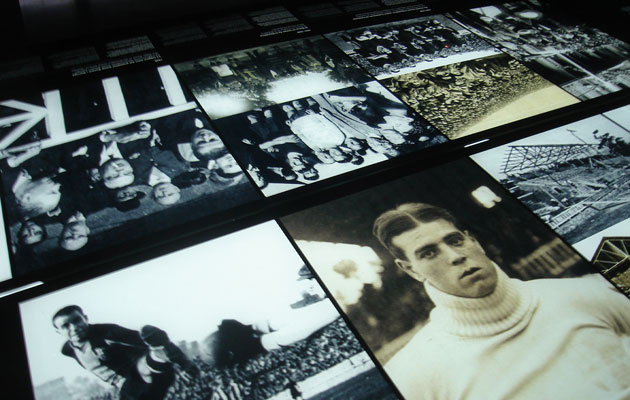
The FCB Tour & Museum (€23; children 6-13 €17; children under 6 free; guided tours extra) runs every 15-30 mins (Oct 8-Apr 1 Mon-Sat 10am-6.30pm, Sun 10am-2pm; Apr 2-Oct 7 Mon-Sat 10am-8pm, Sun 10am-2pm; match days 10am-3pm, no access to stadium) with audio-guides in English. From the ticket office (Accès 7), head along the billboard-lined walkway to a three-level, multimedia space. Dominated by a vast touch-screen history section, the museum is part of a tour package that includes a visit to the away team’s changing room, the black Madonna chapel by the players’ tunnel, the press box and, of course, the stadium itself.
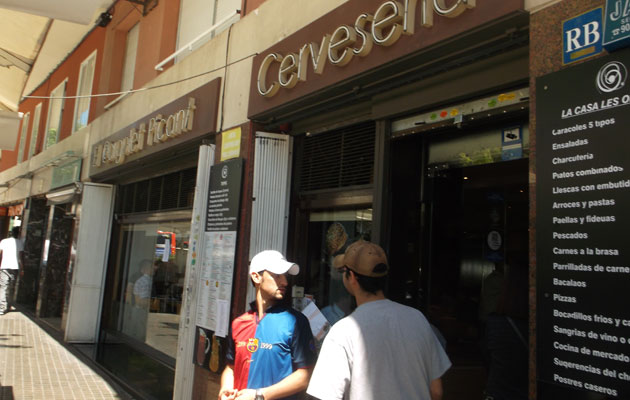
Pre-match bars line both sides of Riera Blanca, south of Travessera de les Corts, between Collblanc metro and the Nou Camp. Corner bar El Rincón de Viti by the Hotel Madanis is covered in framed photos but has taken the unwise decision to tart itself up. Also offering Galician cuisine, on the same strip, the nearby Casa Ferreiro is a handy place to catch the game on TV if you’ve not been lucky enough to get in. Now featuring an open kitchen, it’s trying to play more to its culinary credentials.
Opposite, El Cargolet Picant is an upscale eaterie while simple Bar Granja La Pedrera contains framed FCB shirts in a cramped interior, and sun-catching seats outside. Bar El Rellotge alongside also provides a pre-match terrace.
One recent welcome addition to the plethora of pre-match bars stands on Carrer de Benavent. A living testament to the three Hungarians who starred for FCB in the 1950s – Kubala, Kocsis and Czibor – the Futból Bar Restaurant (No.7) was opened by Péter Büki, a Haladás fan from Szombathely. It has since attracted fans from all over the world, gather for a beer and a bite before the 200-metre stroll to the stadium.
Closer to the ground, on Travessera de les Corts between the NH Rallye hotel and the stadium, there’s another row of busy pre-match bars, some with pavement tables. These include BaYo, Granja El Gol and Casa Pin.
At the stadium, you’ll find plenty of kiosks selling alcohol-free Estrella beer, hamburguesas and perritos, hot dogs.

